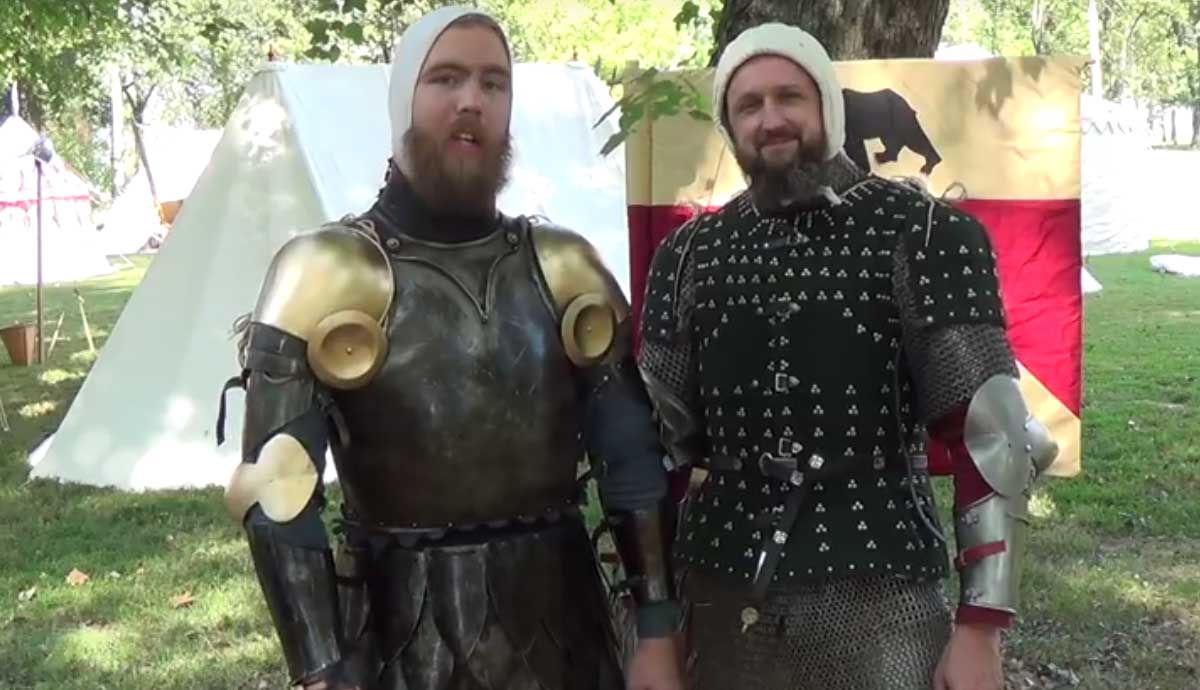 Source: Pursuing the Knightly Arts Youtube channel, November 2017.
Source: Pursuing the Knightly Arts Youtube channel, November 2017.
Last month I joined scores of other medieval re-enactors at the Oak Grove War Memorial Walking Trail, site of this year's The Days of Knights event. The mile-long trail weaves in and around a wooded park that serves as a frisbee golf course. The encampment was laid out chronologically along the trail like a visual timeline of European history from the Vikings to the early Renaissance. It was also my first opportunity to meet a number of well-known personalities from Facebook and YouTube. Among them were Ian LaSpina of Knyght Errant, Tom Biliter of Historically Patterned Mail, and Reece Nelson, the host of Pursuing the Knightly Arts YouTube channel. I even had a chance to exchange a few friendly blows with Reece and Tom.
Between bouts, Reece offered me a chance at Internet infamy. All I had to do was stand in front of his camera and answer a few questions. Anyone who has seen it knows that my performance was certainly not very polished. After reading a number of the comments discussing everything from my armour’s original sources to the construction material, I thought I should provide some details for those who are interested:
The armet, arms, and legs were all made from mild steel in various gauges by Eric Dubé of Armuré Dubé. They are part of a complete harness based on the effigy of Richard Beauchamp, earl of Warwick, located in St. Mary’s Church in Warwick, England. A number of Eric’s earliest “how-to” videos feature different aspects of his forging my harness. As I would be arming myself for the event, I chose to display the cuirass on a stand in front of my pavilion and instead wear a brigandine for the foot combat.
The brigandine was made by Ashley Barber of Armour Services Historical. It is based on an Italian example in the Royal Armouries in Leeds circa 1470. It is made of green wool, hand-tinned spring steel plates with decorative tinned-steel rivets and hand-forged buckles. The spaulders are based on “Adoration of the Magi” by Jean Fouquet circa 1452-1460. No actual examples are known to survive.
The gauntlets were a recent addition made by Vasiliy Mankov of Old-World Armoury. I needed something sturdy but flexible for fighting on foot. They were made from 1mm hardened spring steel.
